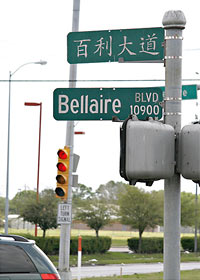 David Kaplan of the Chronicle catches up with Houston-apartment legend Michael Pollack and fills in a few details of the Colonial House story:
David Kaplan of the Chronicle catches up with Houston-apartment legend Michael Pollack and fills in a few details of the Colonial House story:
According to media reports then, Pollack lived in a super-size Colonial House apartment called “the Dream Suite,” which had a colored water fountain inside and a king-size water bed.
The Dream Suite was real, but Pollack says he never lived there. His home was the Four Leaf Towers and later the Houstonian, he said.
His glamorous stud image was just an act, he maintains, designed to rent apartments.
“I was promoting day and night,” Pollack said. “To me, it was a job.” . . .
According to Houston City magazine, he’d show up at nightclubs in a chauffeured custom Cadillac limousine with a moon roof. He traveled with an entourage, including bodyguards in satin jackets adorned with Pollack’s silhouette.
There are more memorable Pollack TV spots to be dug up:
One commercial featured Pollack in a safari outfit and a tiger. He had a fear of cats, even little cats, and being next to the full-grown beast was terrifying, he recalled.
In 1986, Pollack left Houston because, he said, the local economy and apartment market looked increasingly grim.
Colonial House was foreclosed on in 1988. It was acquired by DRG Funding Corp., the lender that financed the complex’s redevelopment. Pollack moved back to California, working there a few years before settling in Mesa[, Arizona].
In Houston, the Colonial House era is no more. A year after the foreclosure, the mammoth complex changed its name to Lantern Village.
After the jump: Laundry tips from a longtime resident of today’s Lantern Village!




